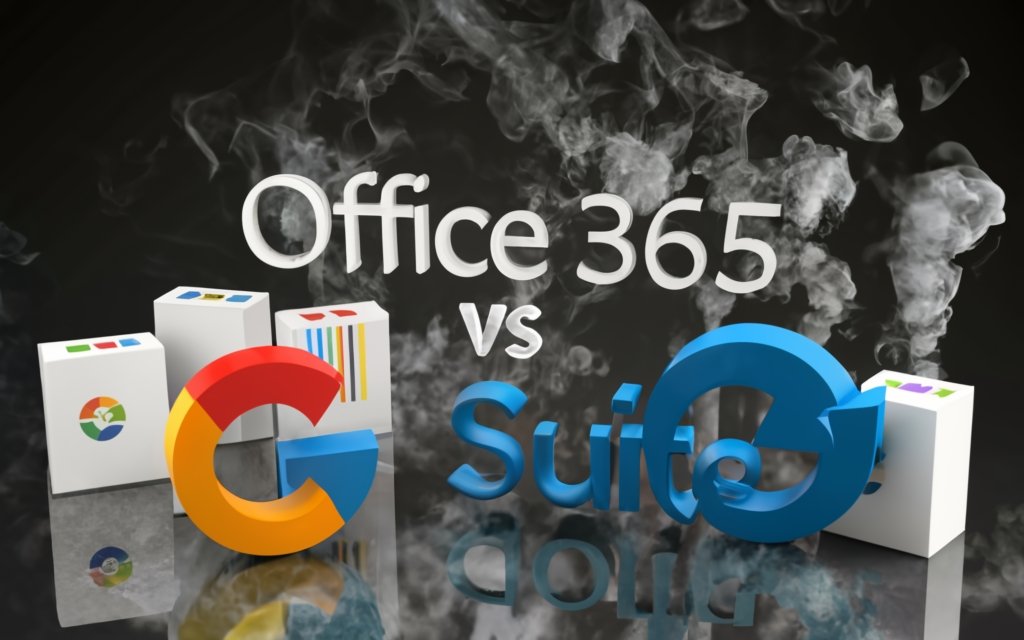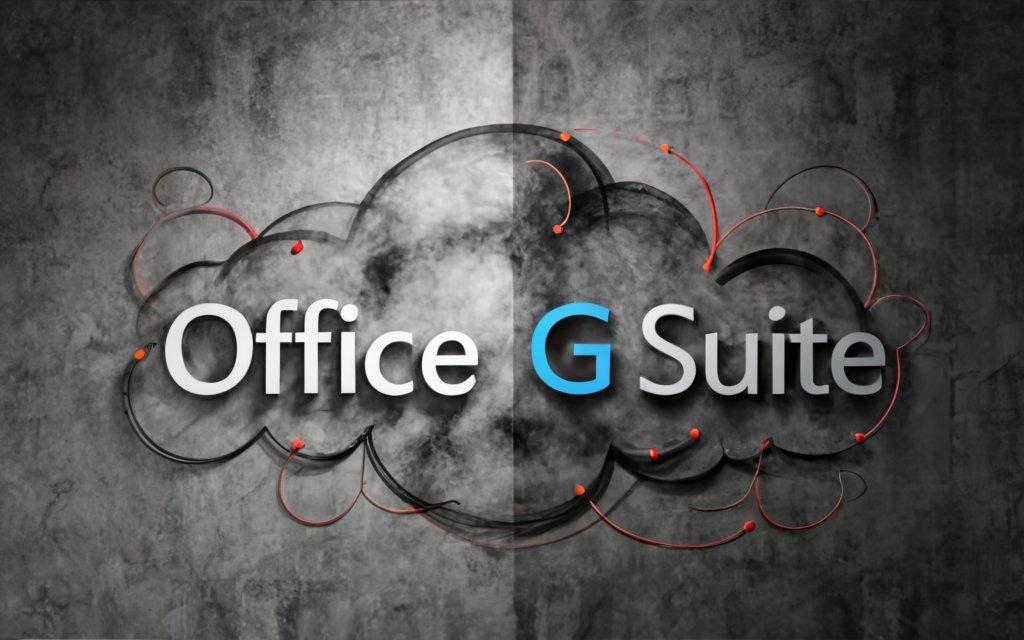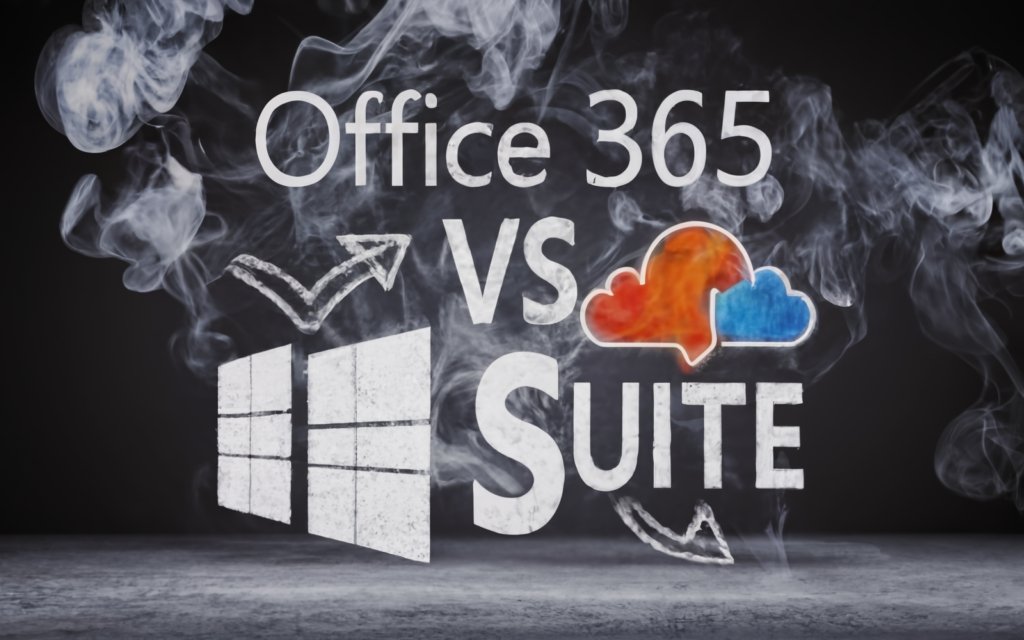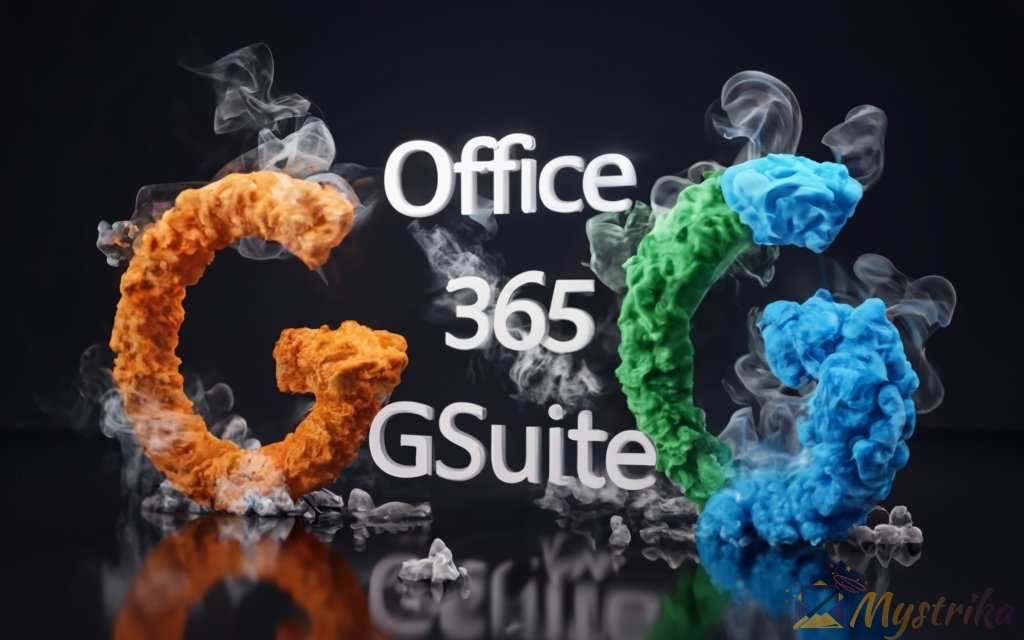Trying to decide between Office 365 and G Suite? This epic battle pits Microsoft’s enterprise stalwart against Google’s cloud-native upstart to see which platform prevails for business email and productivity. We compare features, security, integrations, pricing and more – including critical factors like Office 365’s familiarity vs G Suite’s collaboration. Discover the pros and cons to determine the better choice for your needs. Let the games begin!
Overview of Office 365 and G Suite Email
When it comes to business email, most companies are faced with two main options – Microsoft Office 365 or Google’s G Suite. Both provide professional, customizable email along with a host of other collaborative tools. But how do these popular platforms differ when it comes to delivering and managing email? Let’s break it down.
What is Office 365 email?
Launched in 2011, Office 365 is Microsoft’s cloud-based subscription service that includes access to popular productivity apps like Word, Excel, and of course – Outlook email.
Outlook has long been the email client of choice for many businesses. Its desktop app offers robust tools for organizing emails into folders, scheduling meetings, managing contacts, and more.
With Office 365, all that functionality is now available via Outlook on the web as well as mobile apps for iOS and Android. Emails, calendars, and files sync across devices for access anywhere.
Some key features of Office 365’s Outlook email include:
- 50GB mailboxes per user
- Custom email addresses with business domains
- Conversation threading
- Shared calendars, contacts, tasks
- Email encryption
- Email archiving and compliance
- Advanced security and anti-spam filtering
Businesses can manage Office 365 email accounts and settings from a centralized admin console. Usage analytics help monitor email traffic and trends.
Overall, Office 365 email provides a familiar Outlook experience while extending it with cloud convenience, mobile flexibility, and advanced security.
What is G Suite email?
First launched in 2006 as Google Apps for Business, G Suite is Google’s cloud productivity suite that includes business email powered by Gmail.
Many businesses were initially hesitant to switch their email from Outlook to Gmail. But over the years, G Suite has added more enterprise capabilities while maintaining Gmail’s intuitive interface.
Here are some notable features of G Suite’s Gmail for business:
- Unlimited storage per user
- Custom business domains
- Smart advanced search
- Team email groups
- Email security and spam filtering
- Integration with Google Drive, Calendar, Meet, and more
With G Suite email, the Gmail web interface is front and center. But users can configure desktop and mobile apps to connect Gmail to Outlook or other popular email clients.
G Suite administrators have granular control and insight into email usage and security through the Admin console. APIs allow for custom integrations with third-party apps.
While not as deeply entrenched in the enterprise as Office 365, G Suite email brings Gmail’s innovative ease of use and collaboration to business environments.
Key features of Office 365 email
For many businesses, Office 365’s Outlook-driven email checks all the boxes in terms of functionality and familiarity. Let’s look at some of its standout features.
Flexible access – Users can access Office 365 email in the Outlook desktop app, Outlook on the web, and Outlook mobile apps for iOS and Android. Emails, contacts, calendar events and files sync across all access points.
Custom business domains – Companies can configure Office 365 to use their own domain name for employee email addresses and website URLs.
Offline access – Outlook desktop allows users to view, read, and respond to emails even without an internet connection. Changes sync when connection is restored.
Collaboration tools – Office 365 email integrates with Microsoft Teams, SharePoint, Yammer, and other collaboration apps for seamless workflow.
Email archiving – Built-in archiving automatically saves all email communications long-term for security and compliance purposes.
Focus modes – Features like Focused Inbox prioritize important emails while keeping less relevant ones easily accessible but out of the way.
Data security and compliance – From encryption to advanced threat protection, Office 365 offers robust email security for peace of mind.
With its deep roots in business environments and trusted Outlook platform, Office 365 email balances power with familiarity.
Key features of G Suite email
As a modern, cloud-native solution, G Suite email provides unique advantages to companies looking for flexibility and collaboration.
Accessible interface – The intuitive, conversational Gmail interface lowers training time and increases productivity.
Real-time collaboration – G Suite email makes collaborating on emails, files and tasks easy for distributed teams.
Flexible business controls – Admins have access to 150+ settings controlling security, compliance, routing, provisioning, and more.
Gmail Smart Features – Intelligence features like Smart Compose, Smart Reply, and spam detection maximize productivity.
Integration with G Suite apps – Emails seamlessly integrate with tools like Google Drive, Docs, Sheets, Calendar, Meets and more.
Add-ons and integrations – Gmail is customizable, with thousands of third-party add-ons and APIs for unique integrations.
Mobile optimization – Native Android and iOS apps provide full email functionality optimized for mobile devices.
With its modern, collaborative DNA, G Suite email suits businesses that value innovation, flexibility, and cloud-based efficiency.
Moving business email to the cloud has many advantages. Both Office 365 and G Suite provide comprehensive email solutions tailored to business needs. Which platform is best for your company comes down to your specific priorities and use cases. Evaluating the standout features, integration options, pricing, and ease of use will help determine if your business is better served by Office 365’s enterprise-grade Outlook environment or G Suite’s innovative Gmail-based experience.

Comparing Email Security and Spam Filters
Email security is make-or-break for any business. With spam, phishing attacks, and malware lurking in inboxes, companies must arm themselves with advanced protection. Both Office 365 and G Suite include robust filters to block threats and empower admin control. But how do you choose between them? We’ll compare the spam filtering approaches used by each platform.
Office 365 spam filter and security
With over 200 million active commercial users, Microsoft has honed Office 365’s protection based on real-world threats over time. Multi-layered filters aim to keep inboxes safe.
How the Office 365 spam filter works
The Office 365 spam filter uses a combination of reputational, heuristic, and machine learning techniques to detect and block unwanted mail before it ever reaches a user’s inbox.
Specific methods include:
- IP reputation – Blocking known spammer IPs
- Email authentication – Checking SPF, DKIM, and DMARC protocols
- Content analysis – Scanning text, images, attachments for suspicious content
- Behavior analysis – Identifying patterns of spam campaigns over time
- Machine learning – Leveraging AI to refine filtering based on new threats
Microsoft gathers over 300 billion SMTP transactions and 400 billion authenticated SMTP connections daily to inform its spam identification models.
Suspected spam is routed to the Junk Email folder. Users can report false positives to further improve accuracy. Admins get visibility into filter performance via reports and logs.
Customizing the Office 365 spam filter
The default filters provide ample protection for most needs out-of-the-box. But admins have options to customize filtering for their organization’s requirements.
Admin controls allow adjusting:
- Aggressiveness of heuristic filtering
- Actions for various spam confidence levels
- Block/allow lists for specific senders and domains
- Policies for international spam and regional allow/block lists
End users can configure personal block/allow lists and filtering preferences via Outlook or Outlook on the web as well.
Additional email security features
Beyond its spam and phishing detection, Office 365 employs other tools to keep email secure:
- Anti-malware – Blocks viruses, ransomware, and other threats
- Data loss prevention – Stops sensitive data from leaving via email
- Encryption – Secure messages with S/MIME, TLS, etc
- Audit logging – Records email actions for compliance needs
- Advanced threat protection – AI-powered analysis detects concealed attacks
With its multi-level defense systems, Office 365 provides complete protection for business email environments.
G Suite spam filter and security
As a cloud-native solution, G Suite leverages Google’s experience combating threats across consumer Gmail to safeguard business emails.
How the G Suite spam filter works
G Suite combines the following techniques to identify and divert spam:
- Reputation-based – Stopping mail from known spam sources
- Behavior analysis – Spotting patterns of spam campaigns
- Machine learning – Evolving filtering using neural networks
- Content analysis – Scanning text, images, attachments for signals
- User feedback – Improving accuracy based on user spam reporting
Gmail processes over 100 billion emails per day, using the data to detect emerging spam patterns early. Suspected spam goes to the Spam folder.
Customizing the G Suite spam filter
Admins have granular control over G Suite’s default filtering through the Admin console:
- Set actions for varying spam confidence levels
- Create allow/block lists for specific senders or domains
- Enable/disable regional spam filtering by language or country
- Configure end user spam reporting and notifications
End users can also customize spam filtering directly in Gmail settings.
Additional email security features
On top of its anti-spam capacities, G Suite employs other safeguards like:
- Phishing and malware protection – Uses AI to identify new phishing and malware campaigns
- Security sandbox – Detonates suspicious attachments in a virtual environment
- Data loss prevention – Sets policies to prevent sensitive data exfiltration
- Email encryption – Encrypts emails for privacy and compliance needs
- Audit logs – Provides visibility into email activities for administrators
With adaptive machine learning at its core, G Suite email security keeps your organization safe as threats evolve.
Office 365 vs G Suite spam filtering: Which is better?
Both Office 365 and G Suite leverage immense global email datasets and advanced automation to catch spam and phishing attempts. Which one is “better” depends on your needs:
- Customization – Office 365 gives admins more granular spam filter adjustment options.
- Speed – G Suite’s machine learning responds more quickly to detect new threats.
- Accuracy – With so many commercial email users, Office 365 gathers more behavioral data to fine tune filtering.
- User experience – G Suite end users can train filters directly by reporting spam, improving their individual accuracy.
Overall, most organizations will be well-served by the extensive anti-spam capacities included in either product. Focus instead on which platform better meets your business use cases in terms of features, pricing, and ease of management. And don’t underestimate defense-in-depth strategies like staff education – your people are your first line of protection against email threats!

Email Deliverability and Sending Limits
Beyond security, email platforms must actually reliably deliver your messages to recipient inboxes. Both Office 365 and G Suite incorporate deliverability best practices and allow for high sending volumes. But how do the two compare when it comes to ensuring your emails get through?
Office 365 email deliverability and sending limits
With over half of the Fortune 500 as customers, Microsoft has the data and experience to optimize Office 365 email delivery at scale.
To maintain its sender reputation, Office 365 employs methods like:
- Authenticating all outbound mail via SPF, DKIM, and DMARC
- Maintaining IP address hygiene and managing blacklists
- Monitoring mailbox usage to detect hijacked accounts
- Honoring opt-out requests immediately
Admins can view email traffic analytics and troubleshoot issues through the Exchange admin center.
In terms of sending limits, Office 365 enables high-volume emailing:
- Personal accounts – 10,000 emails per day
- Business accounts – 150,000 emails per day
- Enterprise accounts – Customizable upon request
Sending at scale is also facilitated through dedicated IP addresses](https://docs.microsoft.com/en-us/exchange/mail-flow-best-practices/how-to-set-up-a-multifunction-device-or-application-to-send-email-using-office-3#use-the-inbound-connector-option) and [SMTP relays.
To sum up, Office 365 provides trusted email deliverability backed by Microsoft’s experience delivering enterprise email globally.
G Suite email deliverability and sending limits
As a born-in-the-cloud solution, G Suite is engineered for reliable bulk sending powered by Google’s infrastructure.
For good deliverability, G Suite:
- Leverages machine learning to protect sender reputation
- Authenticates emails using SPF, DKIM, and DMARC
- Provides best practices guidance for admins
- Allows administrators to monitor email delivery in depth
In terms of sending limits, G Suite sets the following daily email thresholds:
- Business accounts – 2,000 emails per day
- Enterprise accounts – Customizable by request
Higher limits are achievable by purchasing Dedicated Senders for $10 per month per address. This allows 100,000 emails per day per address.
Overall, G Suite provides reliable email delivery leveraging Google’s specialized experience sending high volumes at scale.
Office 365 vs G Suite: Which handles deliverability better?
Both platforms incorporate email best practices and ample sending capacity for most business needs. Several factors can help determine the best choice:
- User base size – Office 365 technically supports higher per-account limits beneficial to large enterprises.
- Email types – Transactional email services integrate better with Office 365, while marketing email services integrate better with G Suite.
- Monitoring needs – G Suite provides more granular analytics into delivery performance.
- Support – Larger organizations may benefit from Office 365’s specialized enterprise-grade support options.
- Compliance needs – Office 365 offers more advanced compliance reporting often required in regulated industries.
The good news is both platforms offer the core infrastructure to reach inboxes reliably at scale. Focus instead on each provider’s integration, analytics, and support capabilities to pick the best fit for ensuring your important emails get delivered.

Built-In Email Marketing Tools
Effective email marketing not only reaches the inbox, but also nurtures leads, engages customers, and drives conversions. Which platform should you choose to make the most of your email campaigns? Let’s compare the marketing capabilities bundled with Office 365 and G Suite.
Email marketing with Office 365
With a business focus from the start, Office 365 includes several features to support marketing emails right out of the box.
Mailchimp integration
Office 365 builds in integration with Mailchimp for creating and sending email newsletters. Users can:
- Design campaign templates
- Build subscriber lists
- Segment contacts
- Personalize content
- Schedule sends
- Track performance
Without leaving Outlook on the web, Office 365 users have access to Mailchimp’s intuitive campaign creation tools enhanced by automation and analytics.
Other integrations and add-ons
Beyond Mailchimp, Office 365 supports further email marketing integrations like:
- Landing pages – Build customized pages to convert email clicks with integrations like Leadpages and Instapage.
- CRM – Sync subscriber data with CRM systems like Salesforce for workflow automation.
- Surveys – Insert surveys into emails or messages using SurveyMonkey, Microsoft Forms, and others.
- A/B testing – Test email content variations to improve performance using add-ons like HubSpot A/B Testing.
- Design tools – Enhance message templates using the Canva integration.
With Microsoft’s business ecosystem, Office 365 users can assemble a robust email marketing stack.
Email marketing with G Suite
As a productivity-focused solution, G Suite on its own has limited email marketing capabilities. But it makes up for it with seamless third-party integrations.
Mailchimp integration
Like Office 365, G Suite provides direct integration with Mailchimp using an official Gmail add-on. Users can:
- Design appealing campaigns
- Build and organize email lists
- Personalize content with merge tags
- Schedule and send campaigns
- View reports
The add-on brings Mailchimp’s powerful features directly into the Gmail workflow.
Other integrations and add-ons
G Suite also connects with other popular email marketing tools through third-party add-ons:
- Landing pages – Instapage, Leadpages, and Unbounce help convert clicks.
- Surveys – Insert surveys into messages using Typeform, SurveyMonkey, or Google Forms.
- A/B testing – Experiment with email content using the Sender app.
- CRM – Connect with CRMs like Salesforce to track subscriber data.
- Design – Enhance email templates using the Canva integration.
While G Suite itself lacks native email marketing, its ecosystem of add-ons compensates for maximum flexibility.
Office 365 vs G Suite for email marketing: Which is preferable?
When weighing the built-in email marketing merits of Office 365 and G Suite, several factors come into play:
- Ease of use – Office 365 makes it simpler to start email campaigns directly from Outlook.
- Flexibility – G Suite requires add-ons but has more to choose from to customize your stack.
- List building – Both sync well with CRMs, but Office 365 Exchange enables creating marketing lists directly from contacts.
- Analytics – G Suite partnerships with top marketing tools provide deeper campaign insights.
- Compliance – Office 365’s archiving and security controls may better suit regulated industries.
The good news is robust email marketing capabilities are available with both platforms with minimal financial investment by integrating leading third-party tools. Evaluate how each solution’s native and third-party features fit your team’s skills, needs, and workstyles.

Pricing Comparison
Cost will play a key role in deciding between Office 365 or G Suite for your business email. Both provide a range of plans based on features, storage, support, and number of users. How do the costs stack up? Let’s break down the pricing.
Office 365 pricing plans
Office 365 is available in a variety of subscriptions for small businesses, enterprise organizations, non-profits, education, and government institutions.
Below are the standard pricing tiers for commercial business plans:
Small Business
- Office 365 Business Basic – $5 per user/month
- Office 365 Business Standard – $12.50 per user/month
- Office 365 Business Premium – $20 per user/month
Enterprise
- Office 365 Apps for Enterprise – $8 per user/month
- Office 365 E1 – $8 per user/month
- Office 365 E3 – $20 per user/month
- Office 365 E5 – $35 per user/month
Additional add-ons like OneDrive storage or Audio Conferencing are available. Non-profits can get discounts up to 100% off on select plans.
All subscriptions are annual commitments allowing you to pay monthly or upfront annually, with annual plans around 15% cheaper overall.
G Suite pricing plans
G Suite offers four primary editions for businesses:
- G Suite Basic – $6 per user/month
- G Suite Business Standard – $12 per user/month
- G Suite Business Plus – $18 per user/month
- G Suite Enterprise – pricing undisclosed; requires quote
Paid plans are monthly with no annual commitment. Enterprise pricing is not public – you must contact Google sales for a quote.
Add-ons like additional storage or email addresses can be purchased separately as needed.
Non-profit organizations can get discounted rates on G Suite through the Google for Nonprofits program.
Feature comparison by price
The table below shows a side-by-side view of key features for G Suite Business Standard and Office 365 Business Standard plans costing around $12 per user/month:
| Features | G Suite Business ($12) | Office 365 Business Premium ($12.50) |
| Email & Calendar | Gmail, Calendar | Outlook, Exchange |
| Video Conferencing | Google Meet | Skype for Business |
| Cloud Storage | Unlimited Drive | 1TB OneDrive |
| Office Suite | Docs, Sheets, Slides | Word, Excel, PowerPoint, OneNote, Access (PC only) |
| Collaboration Tools | Drive, Sites, Chat, Currents | SharePoint, Teams, Yammer, Power Automate |
| Security | Encryption, Audit Logs, Data Loss Prevention | Encryption, Data Loss Prevention, Threat Protection |
| Support | Email & chat | Phone, web, chat |
The table illustrates the broad feature parity at comparable price points. Storage allotment is a main difference, with G Suite providing unlimited capacity. But Office 365 offers a fuller office suite and SharePoint collaboration compared to G Suite’s more robust real-time collaboration and communication tools.
Which is more cost effective for email?
Determining the most cost-effective option involves several considerations:
- User count – Office 365 offers better per-user value for large enterprises with volume discounts, while G Suite provides flat pricing more suitable for smaller groups.
- Add-ons needed – extras like archiving or desktop apps change the math, so tally the extras you’ll need.
- Training and IT costs – simpler admin and end user experiences can reduce G Suite training time and IT overhead.
- Existing IT infrastructure – integrating Office 365 with deployed on-premises Microsoft systems has advantages over switching to G Suite’s cloud-only model.
In most cases, after factoring in all variables, Office 365 and G Suite pricing come out close in overall cost for comparable capabilities. Less tangible factors like productivity benefits and ease of use make the final difference.
Take advantage of free trials to compare hands-on rather than just paper-based comparisons. For many, it boils down to “Does our team prefer Outlook or Gmail?” Understanding user sentiment can outweigh small pricing gaps when you account for big-picture productivity.
Making the Best Choice for Your Business
With so many overlapping features, how do you decide whether Office 365 or G Suite is a better fit as your business email and collaboration platform? Key details about your unique needs and environment steer you toward the ideal solution.
Key factors to consider
Assess these areas to guide your decision making:
Business size – Office 365 wins for larger enterprises. G Suite is better suited for smaller teams.
Existing IT infrastructure – Companies invested heavily in on-premises Microsoft software and services integrate better with Office 365.
Device environment – If your workforce uses Windows PCs, Office 365 provides a more seamless experience. For Mac or mobile-centric teams, G Suite is preferable.
Cloud vs desktop apps – If your work relies on desktop Outlook, Word and Excel, opt for Office 365. If your processes are web and mobile-based, G Suite makes more sense.
Email usage – Teams that need advanced email features like shared mailboxes or delegation go with Office 365. For lighter, consumer-style email, G Suite fits the bill.
Collaboration style – Real-time group editing in G Suite facilitates collaboration. Office 365 better supports structured document collaboration through SharePoint workflows.
Change management – Sticking with Outlook avoids disruptive changes, while Gmail may provide desired fresh start.
Growth trajectory – Fast-growing startups get more flexibility from G Suite. Established businesses often prefer Office 365’s enterprise-grade support.
Industry – Office 365 meets stricter compliance needs of regulated industries like healthcare and finance. G Suite offers lower cost of entry for most SMBs.
Pricing and support – Office 365 offers volume discounts for large orgs and premium support plans. G Suite provides flat, transparent pricing suitable to budget-conscious organizations.
Consider factors that impact end user experience day-to-day as well as long term operations and TCO.
When Office 365 is the better choice
With its longstanding business legacy, Office 365 makes the most sense in these situations:
You have significant on-premises Microsoft investments – Moving productivity to Office 365 integrates with ActiveDirectory, SharePoint servers, and desktop software like Outlook and Office.
You need advanced business email features – Office 365 provides enterprise must-haves like shared mailboxes, delegation, and better offline access.
You handle sensitive information – Compliance requirements like legal discovery, archiving, and retention policies are strengths of Office 365.
You have infrastructure partnerships in place – Microsoft enterprise partnerships give you access to dedicated support, migration help, and optimization assistance.
Standardization is important – Staying in the Microsoft ecosystem provides consistency and ability to create integrated technology roadmaps.
Your users rely heavily on Outlook – Your workforce is already trained and efficient with Outlook for email, calendar, and contacts.
In general, large, established businesses committed to Microsoft technologies are ideal Office 365 customers.
When G Suite is the better choice
Alternatively, businesses who fit these profiles tend to favor G Suite:
You’re a startup or small business – G Suite’s lower cost of entry and flexibility benefits bootstrapped teams.
You need simple administration – With less on-premises infrastructure, G Suite simplifies management and reduces IT overhead.
Your team is mobile and distributed – G Suite’s web and mobile-focused experience suits teams working remotely and across time zones.
You want easy collaboration – Real-time document editing and communication in G Suite facilitates teamwork across distance.
Your people primarily use web and mobile email – For teams that don’t rely on Outlook, Gmail will feel familiar and intuitive.
You have tight budget constraints – G Suite’s predictable, per-user pricing helps make the most of limited available resources.
You want to move fast – G Suite cloud-native approach allows smaller, fast-paced businesses maximum agility.
Growing and budget-mindful organizations tend to appreciate G Suite’s versatility and approachability.
Making the final decision
In most cases, one platform emerges as the better match based on the considerations above. But here are a few final tips for making your decision:
- Get input from key stakeholders – Understand end user, executive, IT, and other perspectives before committing.
- Sign up for free trials – Get hands-on with both solutions using real workflows before subscribing.
- Start small if possible – Run a limited pilot to validate the choice before organization-wide rollout.
- Factor in migration costs – Budget for potential employee re-training, migrating data, integrating systems.
- Don’t overbuy at first – Make sure to subscribe to the edition matching your real needs rather than just buying the top tier.
- Re-evaluate periodically – As your business evolves, features and priorities shift and your platform choice may need to as well.
While email and productivity needs show a lot of commonality between businesses, your unique requirements and constraints determine whether Office 365 or G Suite is the better choice. Carefully weighing the key differences for your circumstances leads to making the right decision. And don’t stress – both platforms offer secure enterprise-grade capabilities so you have two great options!

Leveraging the Full Power of Your Email Platform
Getting the most value from your investment in Office 365 or G Suite requires using email and collaboration features optimally for productivity. Follow these tips to maximize the capabilities of whichever platform you choose.
Best practices for Office 365 email
Make the most of Office 365’s enterprise-oriented email environment with these best practices:
Manage mailboxes properly – Archive old messages. Delete unnecessary folders. Moderate folder structure and inbox rules to stay organized.
Use Search intelligently – Search across mailboxes and files. Create Search Folders to surface results continuously. Learn advanced operators and filters.
Make meetings more efficient – Set up rooms and resources for easy scheduling. Enable visitors to tentatively accept meetings. Cut meeting chatter by sharing agenda ahead of time.
Handle mail while out of office – Turn on Automatic Replies when away. Enable mailbox delegation when appropriate. Share team calendar availability.
Improve drafts and proofreading – Use Focused Inbox for distraction-free writing. Take advantage of Editor features like Grammar and Readability checks.
Lock down sensitive data – Enable Data Loss Prevention policies. Encrypt sensitive emails. Block unauthorized file downloads. Require 2FA access to Office apps.
Work with teams effectively – Share calendars across groups. Collaborate on docs with Comments and Version History. @mention colleagues in emails and files. Use Teams for quick chats.
Manage contacts strategically – Organize contacts into labeled groups. Sync contacts across devices. Share contacts with team members as appropriate.
Report issues proactively – Use Report Message and Report Phishing add-ins. Enable antispam and Safe Links policies. Quarantine dangerous attachments.
Following Microsoft’s guidance and widely recommended best practices allows you to work smarter with Office 365.
Best practices for G Suite email
Make the most of G Suite’s collaborative email environment with these tips:
Organize with labels – Use labels instead of folders for flexibility. Nest labels and apply multiple labels to the same message.
Search like a pro – Learn advanced search operators like quotes and hyphens. Search across mail and Drive. Create email alerts for key terms.
Manage meetings smoothly – Install the Calendar add-on for easy event creation. Use speedy invite shortcuts. Enable Quick Responses to tentatively accept meetings.
Enable delegation – Allow conditional access control of your inbox when traveling or unavailable. Configure automated message forwarding rules.
Proofread with integrated tools – Use Smart Compose and Smart Reply to accelerate drafting. Take advantage of Grammarly integration. Activate Confidential Mode and expire messages for sensitive data.
Embrace team communication – Create shared Team Drives and Space folders with collaborators. Use Hangouts Chat and Meet for instant connection.
Get control of contacts – Star your most important contacts. Share contacts externally. Tag contacts for segmented distribution lists.
Safeguard security – Require 2FA. Check login activity in Security Checkup. Use endpoint protection for company devices. Turn on malware and spam filtering to prevent threats.
Automate workflows – Build time-saving email rules like snoozing messages during off-hours or tagging important conversations for follow-up.
Optimizing G Suite’s native features tailored to real-time sharing and communication drives productivity.
Optimizing deliverability
Both platforms provide high deliverability, but follow these rules of thumb to keep your sender reputation high:
Authenticate outbound mail – Maintain SPF, DKIM, and DMARC records to authenticate your domain and prevent spoofing.
Be an email steward – Manage bouncebacks, opt-outs, and abuse reports responsibly. Keep marketing content relevant. Follow anti-spam laws.
Avoid blacklist triggers – Don’t buy lists, spam, or send from poor reputation IPs. Keep your technology infrastructure up-to-date.
Monitor performance – Review metrics like spam complaints, delivery times, and engagement rates. Diagnose issues quickly.
Use dedicated IP addresses – For highest volume emailing at scale, dedicated IPs provide more control and reputation portability.
Consider an email service provider – ESPs provide extra deliverability protection by managing your sending infrastructure. Useful for startups and SMBs.
Healthy email hygiene ensures your mail hits the inbox and avoids termination of your account.
Building effective email campaigns
Well-planned campaigns convert customers:
Create targeted lists – Build segmented lists based on traffic source, purchase history, demographics, interests, and engagement. Avoid spam traps.
Write compelling content – Include a clear CTA focused on reader benefit. Establish thought leadership. Align to subscriber interests. Keep copy concise.
Test and optimize – A/B test subject lines, content, timing, and design. Analyze engagement metrics to refine future campaigns.
Personalize strategically – Use merge tags to individualize messaging while remaining relevant. Personalize based on past interactions.
Automate sequences – Send welcome, re-engagement, onboarding, and other workflows on schedules. Use segmentation and behavioral triggers.
Make it mobile-friendly – Adapt copy length, links, and design for smaller screens. Resize images appropriately. Preview on mobile before sending.
Integrate with CRM and ecommerce – Connect with your stack to match messages to sales cycles and product releases.
Follow best practices – Get recipient consent, enable opt-outs, monitor frequency, and comply with CASL/GDPR regulations to avoid spam folders.
Thoughtful campaigns aligned to audience needs and preferences achieve results.
Tracking metrics and optimizing over time
Measure performance to continuously improve:
Monitor engagement – Watch open, clickthrough, and unsubscribe rates. Set benchmarks and optimize to beat them.
Review link analytics – See CTRs per link to identify compelling content to double down on. Fix or remove underperforming links.
Analyze by segment – Compare metrics for different subscriber cohorts. Refine targeting and messaging for each.
Monitor conversions – For gated offers, watch conversion rates from email click to desired action. Enhance content and CTAs to convert more leads.
Check deliverability – Ensure emails reliably hit the inbox. Investigate bounces and spam reports. Stay off blacklists.
Gather feedback – Send surveys to learn what engages subscribers and what to change.
Test new ideas – Try innovative content formats, personalized outreach, and leading-edge features to evolve strategy.
Consistent improvement through refinement is key to continually getting better results.
Getting the most from your email platform relies on using its capabilities most strategically. Follow best practices tailored to your chosen system while incorporating general principles that maximize productivity and security regardless of provider. What matters most is not whether you choose Office 365 or G Suite – it’s using the tools at your disposal most effectively.

Key Takeaways
Deciding between Office 365 and G Suite for your business email and collaboration boils down to aligning features to your specific needs and environment. Keep these takeaways in mind:
- Evaluate both platforms’ email, app, storage, and collaboration capabilities to ensure they meet your unique workflow requirements.
- Compare the security, compliance, and deliverability features to ensure either platform can satisfy business standards and regulations.
- Factor in the marketing and automation integrations each platform provides out-of-the-box to match business goals.
- Consider pricing in the context of value delivered and total cost of ownership based on your headcount, growth goals, and IT infrastructure needs.
- Weigh the scenarios where Office 365 excels for larger enterprises against situations where G Suite makes more sense for many SMBs and startups.
- Develop company best practices tailored to the email platform you select to maximize productivity and security.
- Continuously track performance metrics on campaigns, deliverability, and engagement to optimize use of your selected platform over time.
The good news is that both Office 365 and G Suite offer secure, full-featured solutions for enterprise-grade email. Focus on how well each platform’s strengths align with your specific business environment and needs to determine the better choice.
Frequently Asked Questions
Q: Is Office 365 or G Suite better for small businesses?
A: G Suite is likely the better choice for most small businesses. Its lower pricing, simpler management, and collaboration focus suit the needs of SMBs well.
Q: Which works better for enterprises?
A: Large enterprises often favor Office 365 for its seamless integration with on-premises Microsoft infrastructure, advanced security and compliance, and premium support options.
Q: Can Office 365 and G Suite work together?
A: Yes, the two solutions can interoperate to some extent. For example, you can connect G Suite accounts to Outlook desktop or add G Suite calendars to Outlook. Some limitations exist, but the platforms are somewhat compatible.
Q: Is G Suite going away?
A: No, Google remains committed to developing and supporting G Suite as a cloud productivity solution for businesses. Its large user base ensures continued investment rather than it going away.
Q: Does Office 365 email work offline?
A: Yes, Outlook desktop allows working with email, contacts, and calendar data offline. Changes later sync back when you reconnect. The web versions of Office 365 require an internet connection.
Q: Can I use my existing email domain with Office 365 or G Suite?
A: Yes, both platforms allow you to use your existing business email domain rather than being assigned a new one. This allows continuity of email addressing.
Q: Which has better uptime and reliability?
A: Both platforms offer excellent uptime and reliability. Google and Microsoft quote 99.9% uptime for core services with financial SLA credits. For most, the two are comparable in terms of reliability.
Q: Does Office 365 offer unlimited storage like G Suite?
A: No, the highest Office 365 plan provides 5TB of storage per user. G Suite Business and Enterprise plans offer unlimited cloud storage (or 1TB per user minimum).
Let me know if you would like me to add any other frequently asked questions to this section. I can incorporate additional topics to ensure it covers the most common Office 365 vs G Suite questions that arise.

